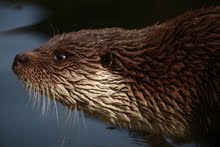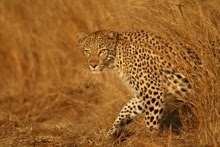I was just looking at a website on bird watching in eastern Austria where the author (Janet) spoke of the difference between birdwatching, birding and ornithology. This is how she put it:
There is a beautiful old wooden bench along a forest trail - high canopy, good undergrowth and a fabulous view peeking out through the trees over an endless ocean.
 forest bench photo by swissrolli cc
forest bench photo by swissrolli cc
The birdwatcher sees the bench. Sits. Breathes in the beauty and hopes for some pretty birds to come past, comfortable in the understanding that running around in the forest is likely to scare off most of the best birds anyway.
The birder sees the lovely bench and beautiful view. Appreciates it. for a moment. And then scurries on by, looking for the next cool bird, comfortable in the knowledge that the best birds are in bird parties at this time of year and there are no bird parties here right now, so she might as well go find one.
The twitcher only notices the bench if it is a useful landmark in finding the Turquoise Continga. Once said cotinga has been found, our Twitcher could become either a birdwatcher (read: bench sitter) or a birder (read: bench appreciator). I suspect that after 15 years of twitching, our twicher is most likely to be a bench sitter post-twitch.
The (lazy) ornithologist shifts their sampling sites so that as many point sample sites coincide with the cool benches. That way they can count birds AND have a cool spot to sit. The academic ornithologist wishes he were rather sitting on the bench playing with theories in stead of being cramped behind a computer in a book and journal-filled office.
The bird ringer knows that the bench would make a great field station and sets up their nets a little bit away so that they can make a net-checking run every half an hour / 45mins and bring the birds back to the bench to ring them there (where the great view is ;-)
Birdwatching was described as a hobby for fun where one is out to see birds in their natural habitats with and without the use of fancy binoculars, scopes and field guides. The term "birding" is more focused on bird finding and study than general watching and more money is spent on optical equipment like binoculars, scopes and birders may travel widely. Ornithology was described as the scientific life-study of birds.I suppose I would describe the difference as such:
There is a beautiful old wooden bench along a forest trail - high canopy, good undergrowth and a fabulous view peeking out through the trees over an endless ocean.
 forest bench photo by swissrolli cc
forest bench photo by swissrolli ccThe birdwatcher sees the bench. Sits. Breathes in the beauty and hopes for some pretty birds to come past, comfortable in the understanding that running around in the forest is likely to scare off most of the best birds anyway.
The birder sees the lovely bench and beautiful view. Appreciates it. for a moment. And then scurries on by, looking for the next cool bird, comfortable in the knowledge that the best birds are in bird parties at this time of year and there are no bird parties here right now, so she might as well go find one.
The twitcher only notices the bench if it is a useful landmark in finding the Turquoise Continga. Once said cotinga has been found, our Twitcher could become either a birdwatcher (read: bench sitter) or a birder (read: bench appreciator). I suspect that after 15 years of twitching, our twicher is most likely to be a bench sitter post-twitch.
The (lazy) ornithologist shifts their sampling sites so that as many point sample sites coincide with the cool benches. That way they can count birds AND have a cool spot to sit. The academic ornithologist wishes he were rather sitting on the bench playing with theories in stead of being cramped behind a computer in a book and journal-filled office.
The bird ringer knows that the bench would make a great field station and sets up their nets a little bit away so that they can make a net-checking run every half an hour / 45mins and bring the birds back to the bench to ring them there (where the great view is ;-)



















.jpg)



.jpg)








.jpg)


